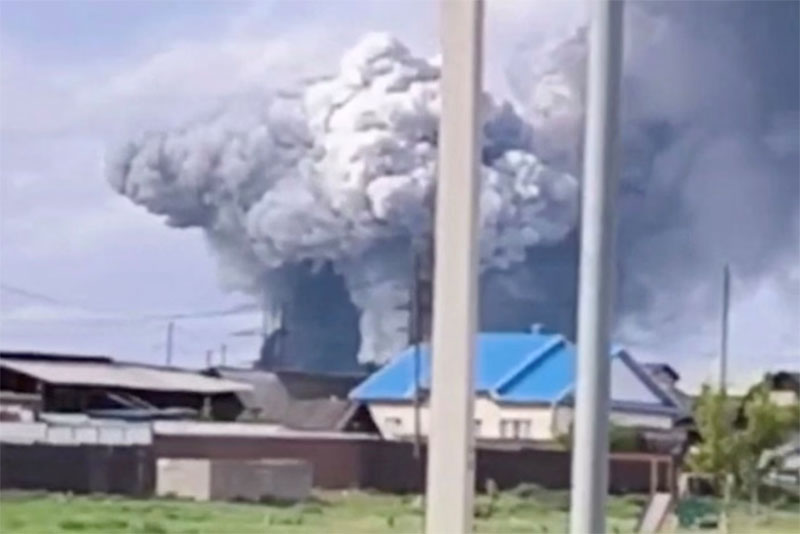Photo Credit: Getty Images
On June 1, 2025, Ukraine's Security Service (SBU) executed a daring, unprecedented drone assault on Russian military airbases, striking deep into enemy territory. Codenamed Operation Spiderweb, the attack targeted four strategic sites and reportedly destroyed 41 aircraft, including nuclear-capable bombers.
Among the aircraft destroyed were the Soviet-era Tu-95 "Bear" bombers, Tu-22 "Backfire" jets, and A-50 radar command planes. "Enemy strategic bombers are burning en masse in Russia," an SBU official confirmed. The operation, which took 18 months to orchestrate, involved smuggling FPV drones into Russia concealed in wooden cabins atop transport trucks. The drones were launched remotely from within Russian borders.
One of the most significant targets was Belaya Air Base in the Irkutsk region—located over 2,500 miles from Ukraine. Other airfields included Dyagilevo (Ryazan), Ivanovo, and Olenya (Murmansk). Satellite imagery released by Ukrainian intelligence shows rows of bombers engulfed in flames, a rare blow to Russia's long-range strike capacity.
Russian authorities acknowledged the attacks. Murmansk Governor Andrei Chibis stated, "Security measures have been strengthened following the strike." The Defence Ministry confirmed damage but offered limited details. The losses are especially severe, considering the Tu-95's role in Russia's strategic deterrent posture.
In a related security incident, two rail bridges near the Ukrainian border collapsed, killing seven people. Russian investigators are blaming sabotage. While Kyiv has not claimed responsibility, the timing raises questions about coordinated disruption tactics.
The operation comes amid renewed international pressure for peace talks. President Volodymyr Zelensky confirmed he had met with Ukraine's Ministry of Defence, Foreign Affairs, and SBU ahead of a proposed summit in Istanbul. "Our position remains firm: unconditional ceasefire, return of abducted children, and full prisoner release," Zelensky said via X. President Trump, mediating from Washington, emphasized, "Now is the time for Moscow and Kyiv to act together. The cost of delay is too high."
Ukraine's military has recently unveiled drones with ranges exceeding 3,000 kilometers, suggesting a shift toward precision, long-range capability. "This was a pivotal event," military analyst Tyler Rogoway wrote. "Our most prized aircraft are sitting ducks. It could happen in the U.S. tomorrow."
Meanwhile, Russia has responded with its largest aerial barrage in months. Ukraine's air defenses claim to have intercepted 385 out of 472 drones and seven missiles overnight, according to official reports. The airstrike's strategic implications are vast. It signals a new phase in Ukraine's war doctrine—one that could redraw the boundaries of reach, resilience, and retaliation.


